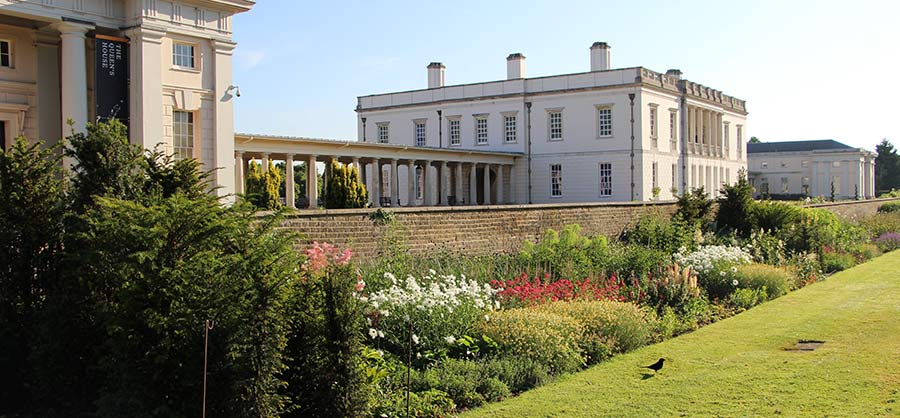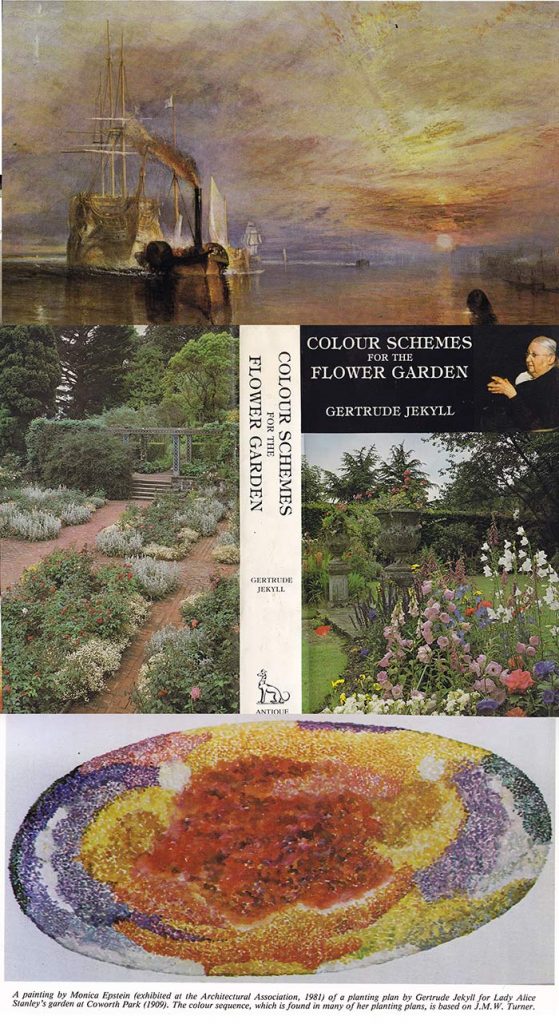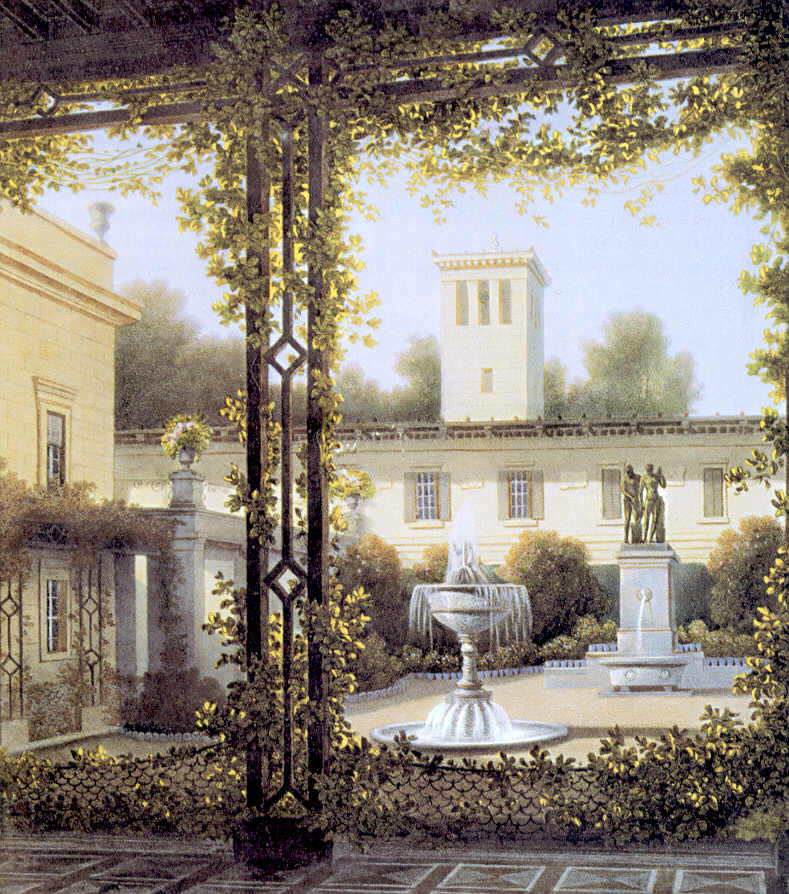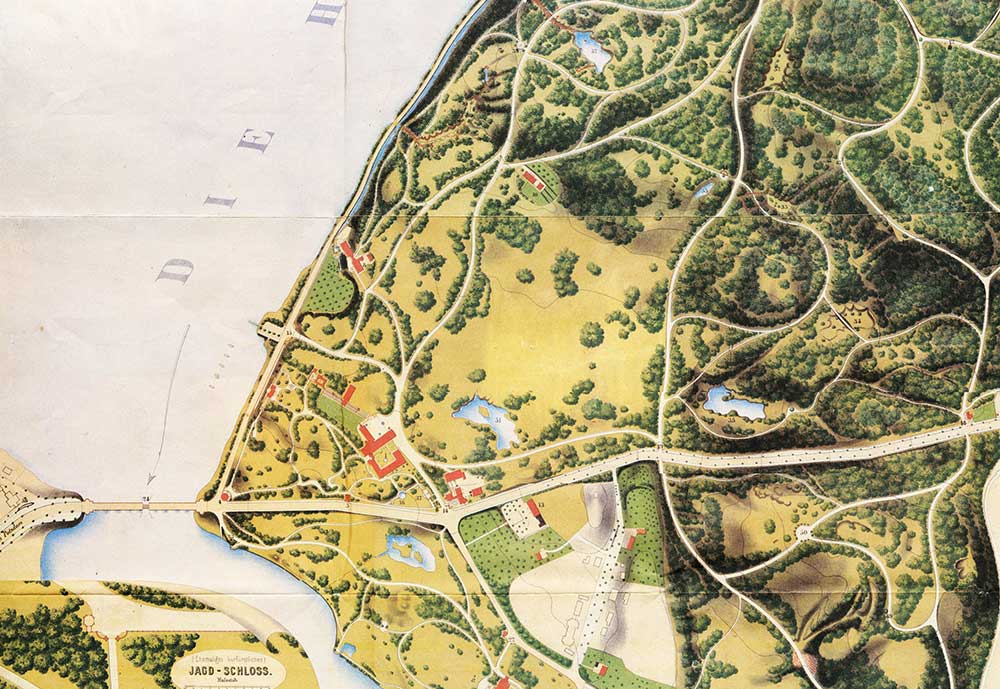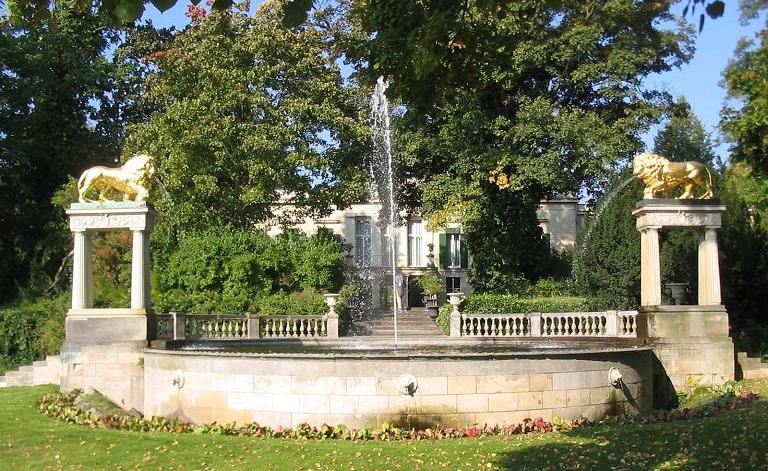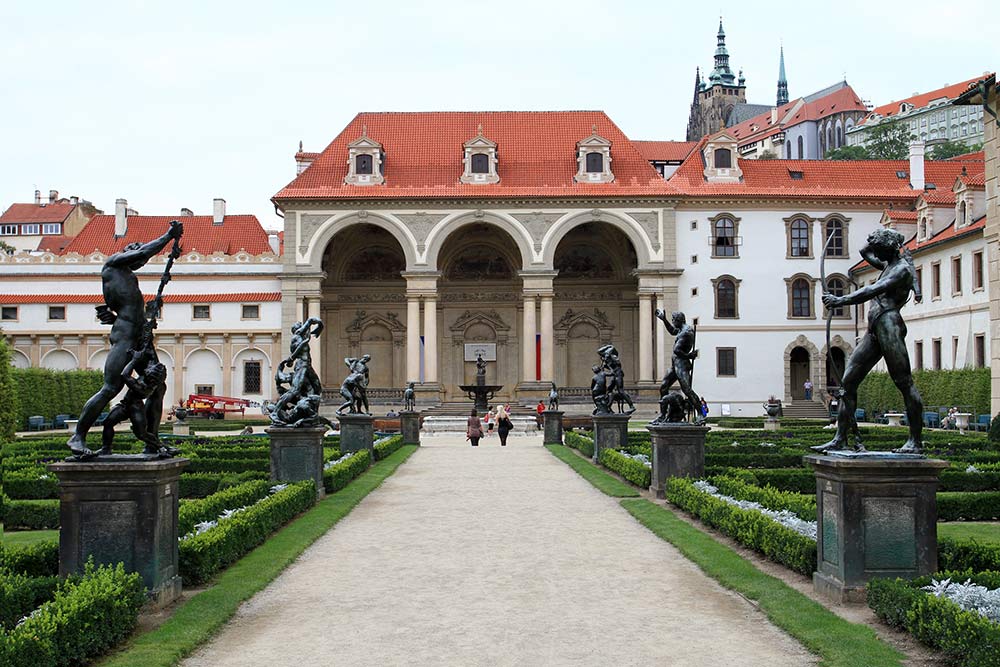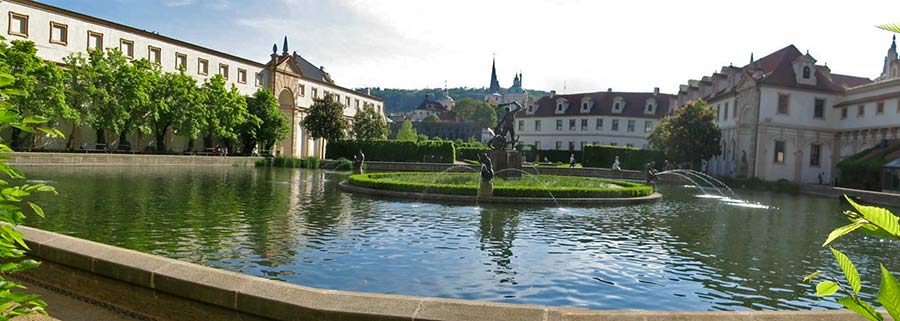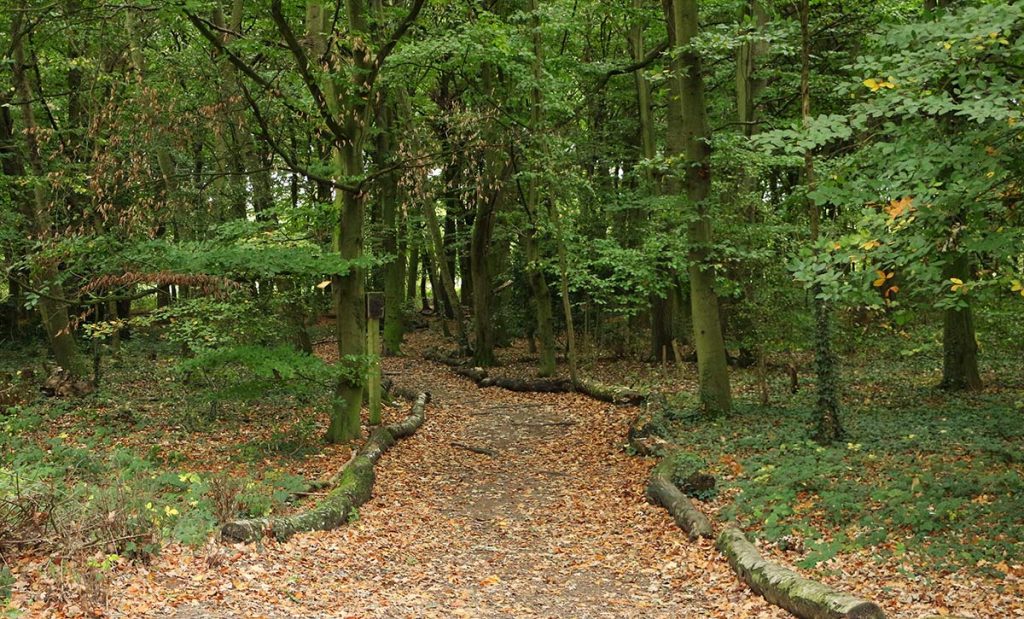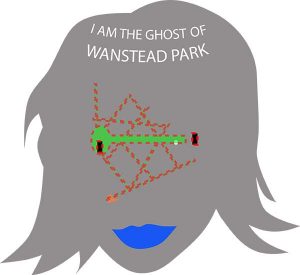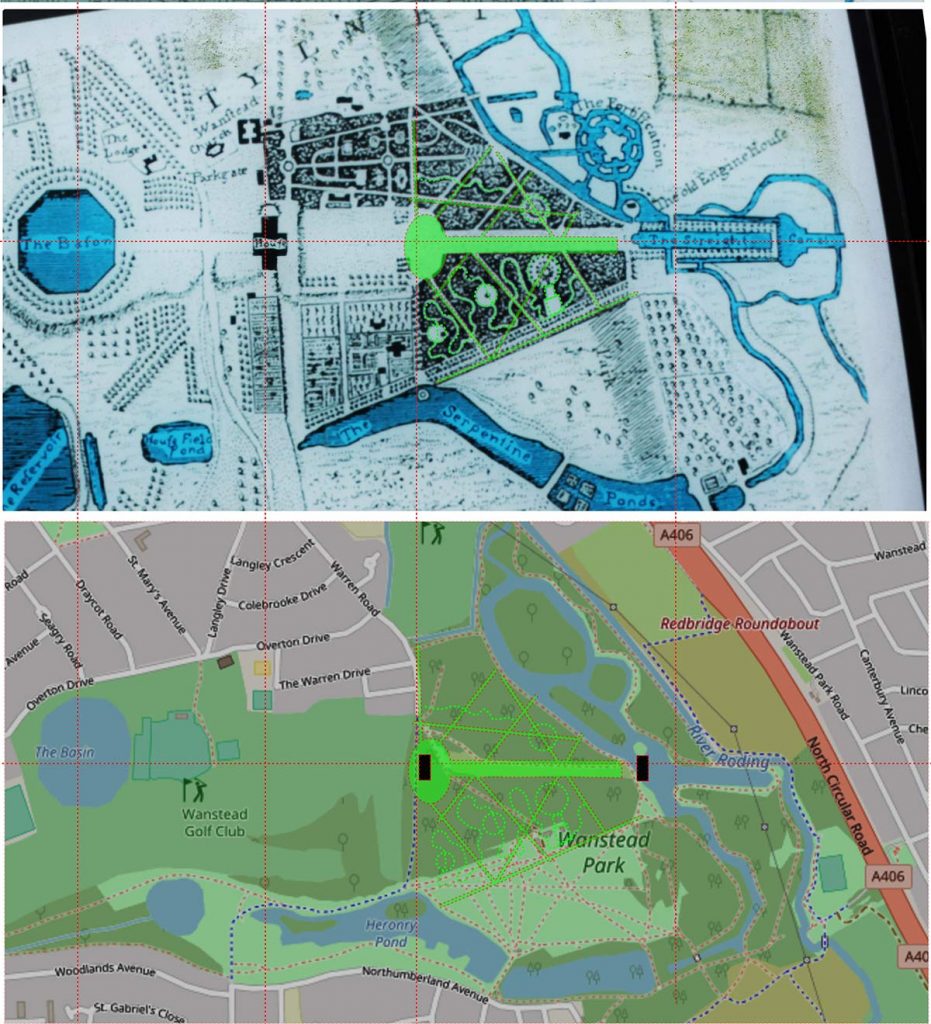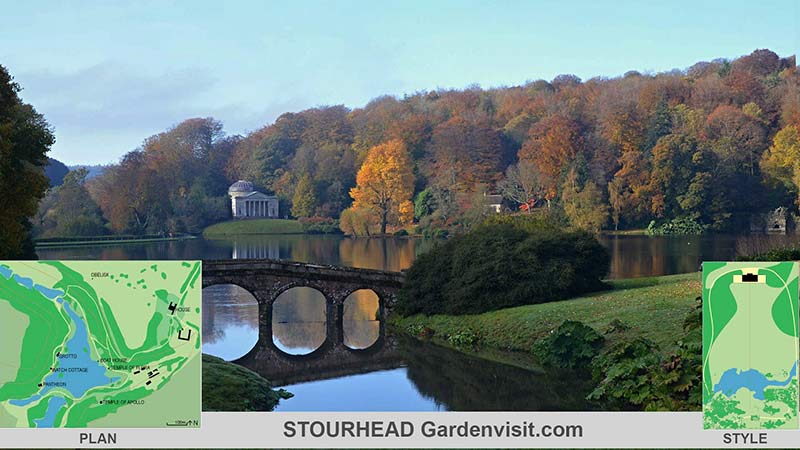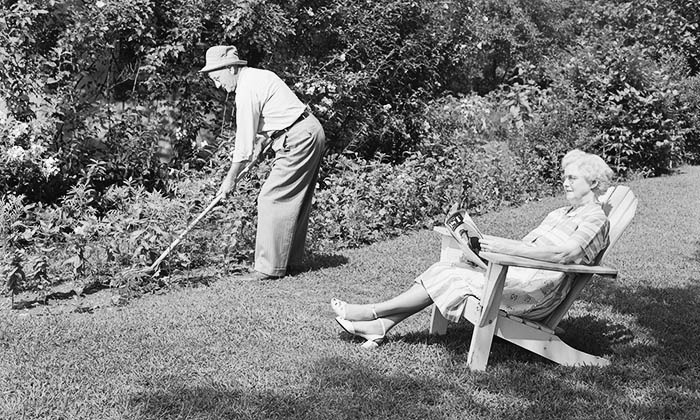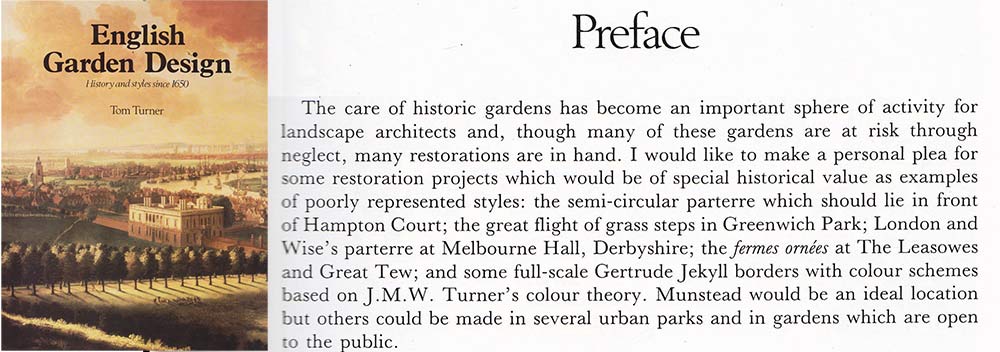
A proposal for 7 historic garden restoration projects in the preface to the first edition of Tom Turner’s English Garden Design
I proposed 7 garden restoration projects in 1986, and reported on what had happened in 1998:
The Preface to the 1986 printed edition of this book made ‘ a personal plea for some restoration projects which would be of special historical value as examples of poorly represented styles’. The plea had no influence upon events but the following update may be of interest to readers: (1) The semi-circular parterre at Hampton Court, known as the Fountain Garden, has not changed. But the nearby Privy Garden has been restored with the greatest possible care for historical accuracy. I believe this was an error of judgement: the Privy Garden is an unremarkable as a Baroque parterre but looked good in its picturesque 1986 condition. The Fountain Garden remains rather ugly but would have been very splendid – if restored in the manner of the Privy Garden. (2) The Giant Steps in Greenwich Park have not been restored. The Royal Parks Agency commissioned a design for a Baroque water cascade on the site. It was opposed by the local people. I can see a strong case for restoring the original steps which would have been like Bridgeman’s theatre at Claremont Landscape Garden. Or one could make a respectable case for a new design on the site. But ‘restoring’ a cascade which never existed would have been illogical. (3) The Leasowes is now run as a country park. (4) Nothing has been done about the parterre at Melbourne Hall or the ornamental farm at Great Tew (5) Gertrude Jekyll’s garden at Munstead Wood is, I am delighted to report, being restored.
It’s time for another update:
- The semi-circular parterre at Hampton Court has not been restored and the Privy Garden still lacks the aesthetic quality it had before it was restored
- ‘Restoration’ of the Giant Steps in Greenwich Park is under consideration and may well happen – I will do a blog post about this soon
- The Leasowes is still run as a country park and with little regard for the outstanding importance of William Shenstone’s conception
- Nothing has been done about the parterre at Melbourne Hall
- Nothing has been done about the ferme ornée at Great Tew
- Good restoration work has been done at Munstead Wood and it is open to the public by appointment
- I suggested ‘some full-scale Gertrude Jekyll borders with colour schemes based on J.M.W. Turner’s colour theory’
With regard to the 7th suggestion, I was thinking about the long border in Greenwich Park but did not mention it because the Giant Steps seemed more important. In 2013, The Royal Parks appointed Chris Beardshaw to ‘completely redesign the border’. I have often admired his work at Chelsea and am sure he did a good job for Greenwich. But there are lessons to be learned:
- The quality of the long border is poor. This may because you can’t just ask an expert to design a herbaceous border. You need to expert to have responsibility for its management and review the design very frequently. It’s best to have the expert working on the border and thinking about it all the time. Is this plant doing too well? Why is that plant suffering? Would it be better if those two plants were not side by side? do those colours go together?
- The Royal Parks Agency (as it used to be) lacked expertise in the design and the design history of parks, gardens and landscapes. So they probably did a poor job in briefing Chris Beardshaw.
- The Royal Parks are really bad at involving volunteers in the management of parks and gardens. This is a tragic wasted opportunity for bringing in resources of mind and brain and involving the community.

